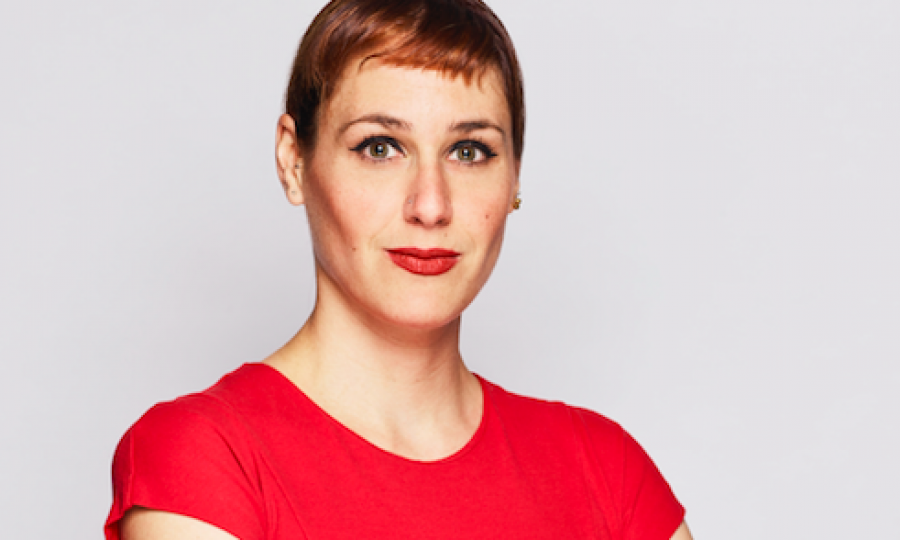Craig Aron is a venture-backed Startup Operator and Business Development Executive with over fifteen years of digital experience in a variety of capacities, with a deep understanding of the digital advertising, media, and technology ecosystem.
Craig oversees Bidtellect’s strategic partnerships, supply/inventory partnerships, platform solutions, and general business development and GTM strategy.
In this interview, we cover:
- The biggest changes in the supply chain since Craig first started his career.
- Hurdles stopping brands and publishers from adopting native.
- The emerging trends that are shaping the native advertising market.
- The big trends shaping the ad-tech landscape today.
- How Bidtellect adapted to GDPR.
- How marketers can get the most out of Bidtellect.
- How Bidtellect’s clients measure the impact of their native campaigns.
- The role data plays within native distribution
- Why the Nudge & Bidtellect partnership is important for advertisers.
With your extensive experience driving the adoption of consumer-friendly ad experiences in the industry, what’s changed in the supply chain/landscape since you first started?
Over the last few years, there’s been a steady shift towards more consumer-friendly ad formats and experiences. The technology has been there to support this for some time, and has been something of a talking point in the Ad Tech space over the last 10+ years. During the emergence of the digital pre-roll video ad format a decade ago, we coined the term “Polite Pre-Roll” at AdoTube (where I was an early employee working closely with the founding team). This ad unit gave the user the choice to engage further with the ad or disengage to continue viewing the intended content. During my time at Innovid, the Interactive Pre-Roll gained market adoption, giving complete control to a user to engage with their ad experience on-demand in a variety of formats. YouTube also emerged with their TrueView format, which allowed the user to skip the pre-roll ad after a few seconds in view. More engaging, high impact digital display formats also began to proliferate as the IAB created standards around their “Rising Stars” formats.
Despite all of these innovations, as Jeff Zucker famously warned back in 2008, traditional publishers were not prepared to trade analog dollars for digital pennies. As Demand for digital advertising continued to grow, publishers were pressured to drive as many eyeballs to their sites as possible while pushing the boundaries on the amount of ad inventory and formats they could sell to advertisers. The emergence of programmatic technology also made it easier for publishers to increase ad load and scale inventory. As the market matured and measures towards transparency and measurement improved (including the push towards viewability), some unintended consequences came alongside it that included even more disruptive ad formats created primarily to increase viewability.
The good news is that several factors are reinvigorating the push towards consumer-friendly ad experiences. The first is the rise of social platforms that recognize that ads that are more native to their platforms’ ‘feed-based’ content experiences yield the best results. Couple that with mobile devices becoming the primary mode of content consumption, and the fact that traditional display ad experiences on your most intimate device simply do not fit.
Consumers have been conditioned to ignore or skip ads for a number of years, and further advances in technology are enabling more choice over the ad experiences people view.
With regulation coming into the space with GDPR and now the California Consumer Privacy Act, consumers will also be gaining more control over their privacy, and how they want (or don’t want) to be targeted by advertising.
While these market forces converge, and the ad/mar tech space further matures, technology advances continue to fundamentally change the way content is both experienced and distributed. This, in turn, is disrupting advertising as we know it, and both Publishers and Marketers need to adapt.
What’s currently the biggest hurdles stopping brands and publishers from adopting native?
If you look at spend data from eMarketer or others, it is clear Native has already ‘won’ as an advertising format. If you include advertising on social platforms, the investment into Native is already much larger than traditional Display, and with further adoption of Native by the scaled Demand Side Platforms, Non-Social Native is the fastest growing category of investment.
Working with our Supply Side partners, we have seen tremendous growth in adoption of Native from Publishers. It’s creating better user experiences for their properties while generating higher yields than traditional Display ads. Top publishers are increasingly removing traditional display ad placements in favor of Native ads. Advertisers that are leaning into Native are seeing incredible results compared to other digital tactics across their KPIs. All of that being said, this type of shift takes time and more education is needed across brands and agencies in a much wider context.
The first wave of Native adoption has mostly been centered around the ad format itself, and how the ad renders across Publishers’ sites. This is mostly tactical, and has been useful to prove the effectiveness of Native as a new digital format. The next wave needs to put more emphasis on the broader creative and content strategy that is being activated by the media execution. With this lens, Native advertising is the distribution vehicle utilized to deliver meaningful content to the consumer. At Bidtellect, we call this being Content-First.
Fusing together content and distribution will help break down some of the silos that are holding back broader adoption, and help shift the mindset of Native as a format to Native as a strategy.
Lastly, measurement is still a major challenge. The industry has mostly ported over display KPIs to measure their Native advertising programs. Reach, impressions, and last-click attribution fails to recognize the true benefits of Native where content consumption, engagement, and attention are better proxies for measuring ROI across the consumer journey.
What emerging trends are shaping the native advertising market?
Going back to my first wave reference (thanks Steve Case), the last several years of Native
Advertising has seen tremendous progress in infrastructure development and adoption of programmatic protocols; these further “connect the pipes” between the buy and sell sides to fully automate the buying process, similar to other forms of Display media. This has opened up more quality inventory as top publishers have made more premium placements available to monetize. These developments have also provided buyers with important tools required to transact media with transparency and brand safety, along with the ability to easily leverage 1st and 3rd party data sets for their campaigns.
The next wave of Native will see a shift towards a broader focus around the creative and content being developed, as well as how that content is being distributed. New formats are emerging (higher impact and different variations of ad content), along with a push into additional channels. That includes Video (OTT) where existing linear TV models and formats are being disrupted, and Audio and Voice where Native is a natural fit. Since ads fit better in those environments, they will yield outsized results.
Advertising disciplines that are highly correlated including Branded Content, Programmatic Native, Content Marketing and Social will also begin to converge, opening up new areas of opportunity for Publishers and Marketers.
At the heart of all of this, Marketers will be reconciling performance and return on investment with this evolved way of connecting and engaging with consumers.
How about the wider context, what are the big trends shaping the ad-tech landscape today?
Well context (no pun intended) is certainly a trend as consumer regulation becomes more prevalent and data ownership and usage moves into the spotlight. As context becomes more important, content and how it’s distributed becomes even more critical. You can’t have strong contextual alignment without strong content alignment. The Ad Tech space has over-indexed R&D on identity and user targeting over the last decade. I see a pendulum swing towards a creative renaissance and focus on the consumer experience for the next decade. You can see this start to play out as big consultancies acquire small creative shops, which will further position them to help their clients navigate fundamental shifts in technology and how consumers are experiencing their products and services. Relevance and better ad experiences is also the core narrative of ATT&T’s newly formed Ad business, Xandr.
You can’t talk about Ad Tech without also talking about the consolidation that continues to occur. From the Facebook/Google duopoly, to soon-to-be triopoly with Amazon’s explosive growth- and take your pick between AT&T/Xandr, or Verizon/Oath for a fourth – taking massive market share. In addition to the natural maturation of the space with market factors taking hold, a lot of this M&A is predicated on the fact that content and distribution has fundamentally been disrupted by the internet, and the $70B in TV ad spend up for grabs. Consolidation has also weeded out a lot of players in the space propped up on venture funding with no real value prop, or have stacked companies together with complementary products and offerings.
With all of that, there is still a lot of innovation happening on the edges. I’m bullish on the opportunity for ad tech startups who have differentiated offerings that are helping solve real pain points for Marketers and Publishers to thrive in the ecosystem.
What is your take on GDPR and what is Bidtellect doing differently now, than 12 months ago, for your European partners?
Europe is a small portion of our overall business, but like every other company, we had to adapt and develop to comply with the regulatory environment.
As the light shines on data practices and consumer privacy, better ad experiences to the end consumer are required. Native will play a big role in moving in this direction, including more relevancy and contextually aligned ads that don’t need to identify a specific person to be effective.
Since the environment in which a Native ad is rendered is critical to how that ad performs, we actually developed our optimization engine for context-first and not based solely on user data.
How can clients get the most out of Bidtellect?
It depends on the what the marketer is trying to achieve. If you are a B2B marketer, you may want to drive demand generation, but you also are trying to build brand awareness through thought leadership and other content initiatives. If you are a retailer, you are distributing content to drive sales. There are different strategies and tactics for every category and objective.
Universally, it comes down to collaborating upfront to get a solid understanding of campaign goals and success metrics to leverage our team’s experience and expertise to make recommendations that generate superior results. Then it is about continually optimizing through our software and optimization technology, as well as through manual optimizations by our Platform solutions specialists, campaign managers, and performance analysts.
We also always recommend leveraging our creative services team (b+Studio) with years of experience for creative and copy recommendations. Additionally, we want our partners to get the most out of our core optimization engine designed specifically for driving scale and performance for Native campaigns. They can do this by setting up campaigns to optimize towards post-click engagement metrics with our proprietary Engagement Score, and now through our partnership with Nudge.
How can your clients measure the impact of their native campaigns?
Part of the beauty of the Bidtellect Platform is that we can optimize towards multiple goals that can be effective across the entire Marketing funnel. Some Advertisers are utilizing Native to drive performance and direct response goals and others to build awareness and hit mid-funnel objectives. This can all be measured through standard display measurement (CTR, Conversions, Reach & Frequency, brand studies, etc.). It gets more meaningful when we are able to gain valuable insights around creative, content consumption, and engagement, and how that is impacting their KPIs. This is where our Nudge partnership plays a role. The most impactful type of measurement is when there is a real collaboration with the Marketer, where we can further integrate our measurement capabilities with their success metrics. This could be highly-qualified leads, offline Sales, or a deeper level attribution – going way beyond the click.
What role does data play within native distribution? What do you project will have changed, in the next 12 months, within data driven content campaigns?
Audience data is being leveraged with the trend towards 1st Party data over 3rd Party data. We are starting to see more interesting uses of data, such as tactics to engage consumers with content in conjunction with retargeting tactics to drive purchase or some type of direct action further down the funnel. In the next 12-months, we’ll see a push to better understand audience data as it relates to content consumption, which is currently a blind spot for most Marketers. It is less about the data inputs and more about the insights that can be garnered to help better inform and tailor new content creation to effectively distribute to the right audiences over time.
Why is the Nudge & Bidtellect partnership important for advertisers?
Similar to our approach to fully align with Advertisers and be agnostic to inventory and ad formats that are distributed through our Platform, we don’t want to be the only one grading our homework when it comes to measurement. We thought it made a lot of sense to bring together a Platform that was built for Advertisers and focused 100% on Native Advertising and paid content distribution with a measurement platform solely focused on content analytics.
This brings to market the best in-breed distribution and optimization capabilities for Native together with a trusted 3rd party measurement source for effectively measuring Native ads.
We have a shared vision: Native is not just another ad format, but is simply the way ads will be consumed in the future. Bringing content creation, distribution and measurement closer together will help deliver better advertising experiences to the end consumer.

|
|---|



